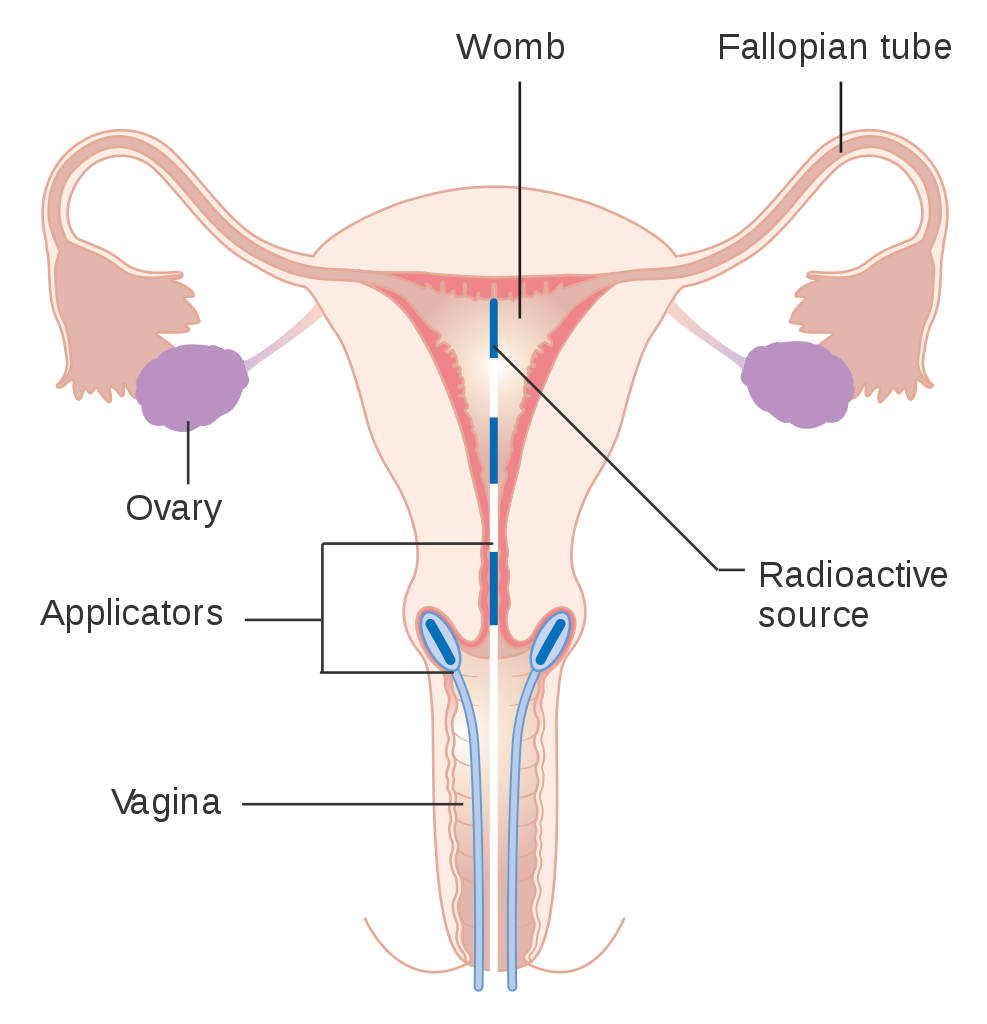Radiotherapy for cervical cancer
Radiotherapy for cervical cancer can be used as part of treatment or to relieve symptoms of advanced cancer.
Why might I have radiotherapy for cervical cancer?
Radiotherapy for cervical cancer may be given:
- Instead of surgery
- After a hysterectomy to destroy any remaining tumour
- With chemotherapy to make the treatment work better (chemoradiation)
- To relieve symptoms if the cancer is advanced or has come back. For example, pain, discomfort, bleeding
Types of radiotherapy for cervical cancer
Two types of radiotherapy can be used for cervical cancer:
- External beam radiotherapy
- Internal radiotherapy (brachytherapy)
You might have brachytherapy during or after a course of external radiotherapy.
External beam radiotherapy
- High-energy X-rays are aimed directly at your cancer cells to destroy them. The radiation only affects the cells in the treated area.
- Usually you come into hospital for treatment every weekday for a number of weeks, with a break at the weekend. Your doctor will let you know how many sessions or treatments you need
- You will need to go to hospital before your treatment for at least one planning session.
Ovarian transposition
This is surgery before external radiotherapy to move one of your ovaries from the pelvis. This is to try to protect it from being damaged by the radiation, to keep your fertility.
Internal radiotherapy (brachytherapy)
Brachytherapy gives a high dose of radiation to a small area. You will normally have 3 treatments, but this may vary.
Before treatment you will be taken to theatre to have special tubes inserted into your cervix and sometimes your womb. You will usually have a spinal anaesthetic (which means you are awake but are numb from the waist down) for this procedure. Then you will have a scan to help your doctors plan your treatment. This can take 2-3 hours.
When the plans are ready you will be brought to a special room for treatment.
The radiation therapist will connect the tubes to the treatment machine. You will be on your own during treatment. However, there is an intercom and camera in the room so the doctor, radiation therapist and nurse can see and talk to you from outside. Treatment can be interrupted if necessary
Once the treatment is finished (5-10 minutes), the tubes are removed. This may be uncomfortable. If you are in pain, you will be given pain medication. You will then be taken back to the ward and usually you will be able to go home the same evening. For some internal radiotherapy you may have to stay in hospital for a few days.
Image courtesy of CRUK/Wikimedia Commons
Brachytherapy treatment after a hysterectomy
Treatment involves putting a plastic tube into the vagina on 3 or 4 occasions. The tube stays in place for 5-10 minutes. You may feel a pressure sensation but you should not feel pain.
Side-effects of cervical radiotherapy
Possible short-term side-effects
These side-effects usually last for 2 to 4 weeks after treatment.
- Cervical and back passage irritation
- Changes to your bowel habits (constipation or diarrhoea)
- Skin irritation in the treated area. It can look like sunburn
- Tiredness (fatigue)
- Feeling sick (nausea)
- Problems passing urine
- Vaginal discharge or bleeding
- Abdominal (tummy) cramps
Possible longer-term side-effects
These can happen months or even years after treatment.
- Early menopause
- Shortening or narrowing of the vagina
- Vaginal dryness
- Difficulty having sex
- Infertility
- Bladder or bowel problems, such as shrinkage of the bladder, causing you to pass urine more often
Talk to a Cancer Nurse

Support Line
Our Daffodil Centres


